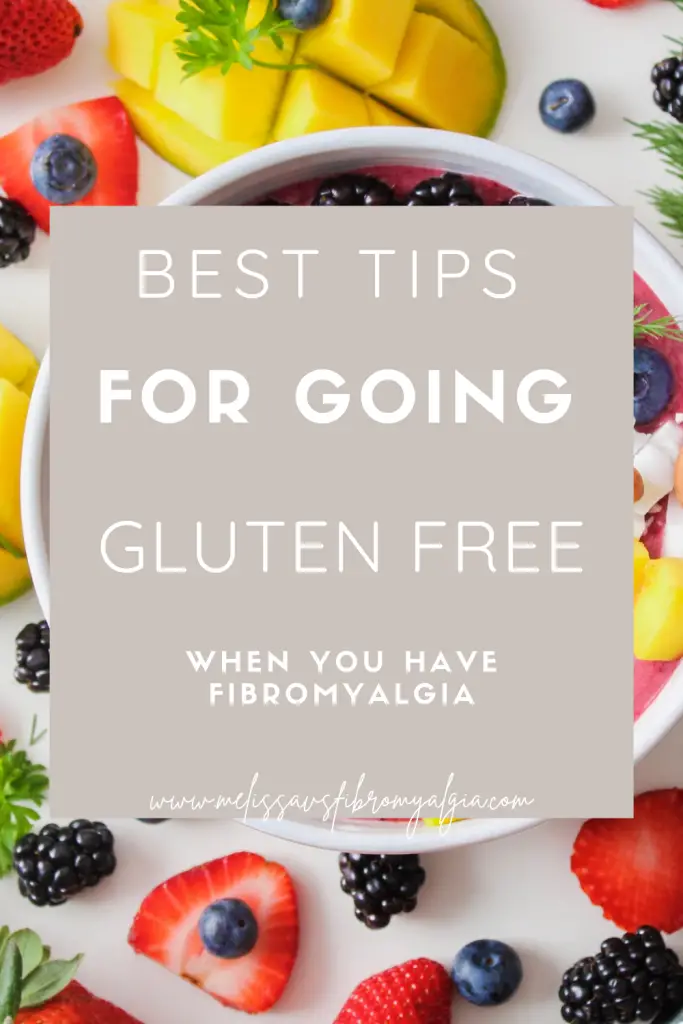Last Updated on January 3, 2022 by melissanreynolds
You’re exhausted, you’re in a lot of pain and you need whatever fuel you can find in your kitchen. So, it seems an insurmountable task, to go gluten-free with fibromyalgia. Here is how I did it.
But there are plenty of blogs, books and websites about being gluten-free.

Affiliate notice: Please note some of my links are affiliate links. I may make a small commission at no extra cost to you if you make a purchase using these.
In my Tiny Mission Gluten-Free Part One, I suggested a few links for further reading. In particular, I have found Elisabeth Hasslebeck’s G-Free books to be super helpful. Her first book, The G-Free Diet: A Gluten-Free Survival Guide educated me about the different names for glutenous grains and how to be gluten-free. Her second book, a cookbook Deliciously G-Free: Food So Flavorful They’ll Never Believe It’s Gluten-Free outlines many recipes that I will work my way through.
Gluten-Free, Hassle Free: A Simple, Sane, Dietitian-Approved Program for Eating Your Way Back to Health by Marlisa Brown was another useful book.
Long before I considered a gluten-free trial, I fell in love with quinoa and millet. These have been the basis of my cross over.
So here’s a few steps to help you get started gluten free:
1 – Fall in love with the non-glutenous grains
Quinoa can replace rice, oats and flour. Millet makes a satisfying porridge. Pay a visit to a bulk foods/organic/health food store and work your way through the options.
2 – Focus on what you CAN have
Lots of fruit and vegetables, I cram kale, carrot, celery, banana, apple and almond milk into my morning smoothie. There are plenty of recipes out there to replicate those things you just need, like cookies! You are looking for wholefoods. A lot of processed foods have gluten in its various guises snuck in there.
3 – Experiment with recipes of your favourite meal made gluten-free by experienced g-freers
Buy, borrow or print out a book of recipes that you can work through during your experiment.
4 – Clear out your kitchen (removing temptations and putting replacements in)
You may feel terrible with cravings and withdrawals in the first little while, so make sure you have safe treats (like dark chocolate, corn chips etc.).
5 – Jump in.
Don’t beat yourself up if you have a hiccup (I found out, two weeks in, that my chicken stock had a wheat filler!), just carry on. I made up little templates for comparing how I felt before, at two weeks and at conclusion. I also made up a template to log daily food, exercise, rest and symptoms.
Just a little note on my progress: I am four weeks in and feeling pretty good. I don’t tend to crave gluten any longer. I have made some amazing gluten-free meals including a simple batter for chicken tenders that my husband and son enjoyed. After introducing oats for one meal last week and enduring a very upset stomach, I have decided to give it six months (yikes!). Now I am beginning to tighten up what I am eating, I am more prepared with healthy food options (when I was super hungry during the withdrawal phases, I could be found with corn chips and dark chocolate…)!
Find the conclusion of my experiment here.

I’d love to hear your favourite g-free meal ideas and tips?
